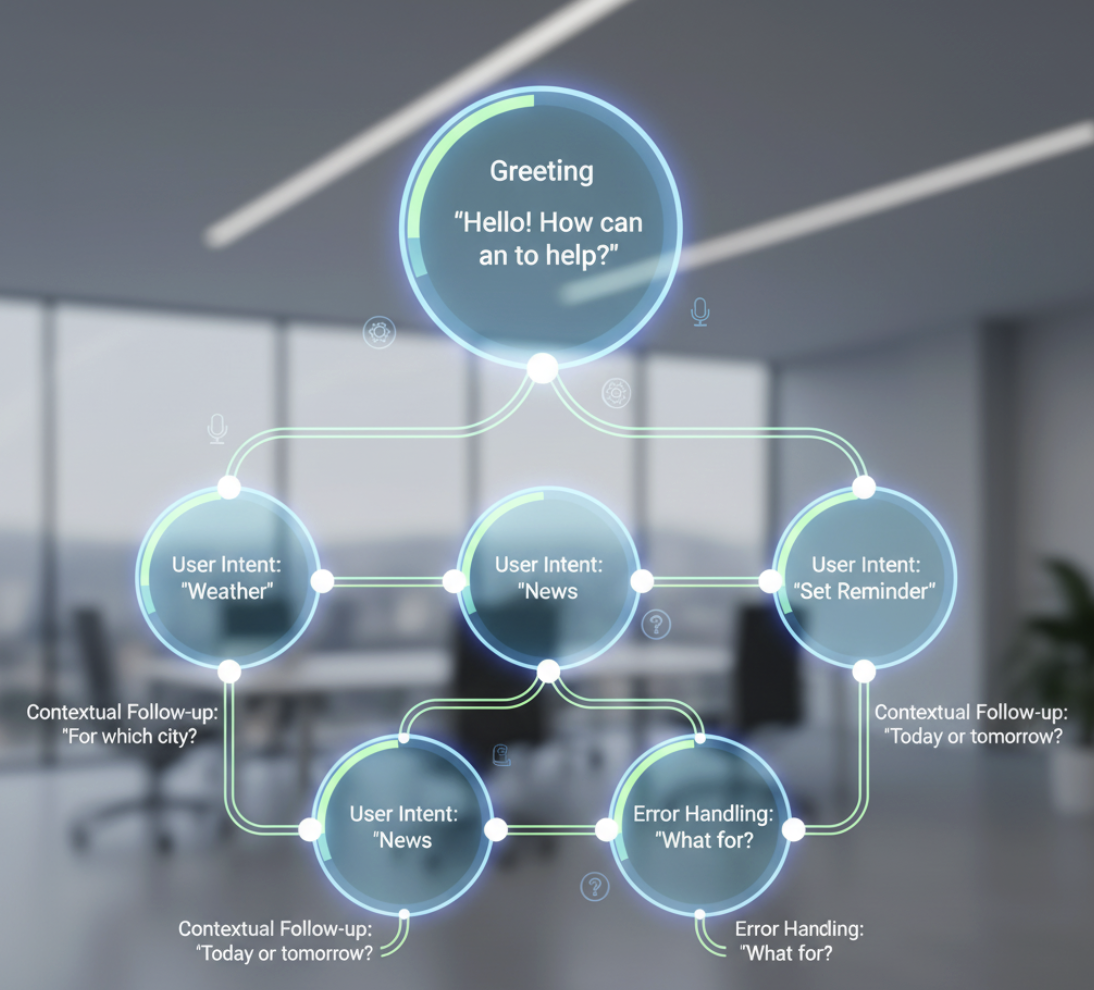
Beyond Text: A Guide to Multi-Modal Prompting with GPT-5 & Beyond
October 9, 2025
AI-Powered Personal Branding: Prompts to Build Your Online Authority in 2026
October 16, 2025Introduction: Why AI Voice Agent Prompts Matter
If you’ve ever asked Siri a question only to get a robotic, mismatched response, you’ve felt the gap between what AI could do and what it actually delivers. For developers and product teams building the next generation of conversational AI, creating natural, intuitive conversations is the holy grail. But here’s the challenge: AI voice agents don’t just need to understand words — they need to understand context, intent, and nuance.
This is where AI voice agent prompts come in. With smart prompt engineering, you can shape voice assistants that feel less like clunky software and more like reliable collaborators.

The Role of Prompt Engineering in Voice AI
At the heart of every AI voice agent is a prompt — the instruction that guides the system’s response. Unlike text-only AI applications, voice agents must handle:
- Conversational flow: Maintaining context over multiple turns.
- Natural tone: Avoiding stiff, robotic responses.
- Error handling: Guiding users gracefully when the AI doesn’t understand.
A well-engineered prompt can transform a frustrating interaction into a smooth, human-like experience. According to Harvard Business Review, businesses adopting conversational AI effectively are seeing both higher user satisfaction and operational efficiency.

Frameworks for Designing AI Voice Agent Prompts
Building effective prompts requires more than just clever wording. Here’s a framework you can use:
1. Start with Intent
Identify the core user intents (e.g., booking a meeting, checking weather, ordering a product). Each intent should map to a tailored set of prompts.
2. Anticipate Variations
Users won’t all speak the same way. Anticipate different phrasings and build flexibility into your prompts.
3. Guide with Micro-Prompts
Break conversations into small steps. Instead of overwhelming the AI with a long instruction, use micro-prompts to guide responses.
4. Test for Naturalness
Ask: “Does this sound like something a human would say?” If not, refine it.
Real-World Examples: Voice AI in Action
- Smart Home Control: Instead of “Command: Turn off light,” a better prompt would be: “When the user says ‘I’m going to bed,’ confirm and turn off all lights.”
- Healthcare Assistants: AI voice prompts can confirm patient symptoms in natural language, reducing miscommunication.
- Productivity Tools: Imagine telling your AI, “Block time for deep work tomorrow morning” — the agent interprets, confirms, and adjusts your calendar.
This is where tools like My Magic Prompt shine — giving developers prompt templates and AI toolkits to accelerate voice agent design.
How My Magic Prompt Helps Developers Build Smarter Voice Agents
Designing natural conversations can be overwhelming. My Magic Prompt makes it easier with:
- Prompt Builder: Quickly test and refine AI voice agent prompts.
- Prompt Templates: Pre-built structures for voice AI, from customer service to scheduling.
- Chrome Extension: Magic Prompt Chrome Extension for generating prompts on the fly.
By streamlining the prompt design workflow, developers spend less time troubleshooting and more time innovating.
Best Practices for AI Voice Agent Prompts
To create prompts that feel natural and effective, keep these best practices in mind:
- Keep responses concise and conversational.
- Use context carryover so the agent remembers prior exchanges.
- Offer clarification options when the AI isn’t sure.
- Continuously test and refine prompts with real users.
For developers serious about scaling their AI projects, integrating a tool like My Magic Prompt ensures consistency and quality.
FAQs: AI Voice Agent Prompts
Q1: What’s the difference between AI voice agent prompts and text prompts?
Voice prompts must account for spoken conversation, natural tone, and turn-taking, while text prompts often allow more structured responses.
Q2: How can I organize my AI voice agent prompts?
Use prompt libraries, like those available in My Magic Prompt, to categorize by intent and use case.
Q3: What’s an example of a bad vs. good prompt?
Bad: “Weather.”
Good: “When the user asks about the weather, respond with today’s forecast in a friendly tone and suggest carrying an umbrella if needed.”
Q4: Can AI voice agents learn from user interactions?
Yes, by feeding real-world interactions back into the system, you can refine prompts and make the agent more natural over time.
Q5: What tools should I use for testing AI voice prompts?
Platforms like My Magic Prompt’s toolkit simplify the testing and iteration process, ensuring developers can optimize quickly.
Conclusion: The Future of Voice AI Is Prompt-Powered
AI voice agents are only as good as the prompts behind them. By mastering AI voice agent prompts and leveraging tools like My Magic Prompt, developers can design conversations that feel seamless, intuitive, and engaging. Whether you’re building the next Alexa or embedding voice AI in a niche app, great prompts are your competitive edge.
✨ Ready to take your prompts to the next level? Explore My Magic Prompt and unlock better, faster, and smarter AI workflows.

